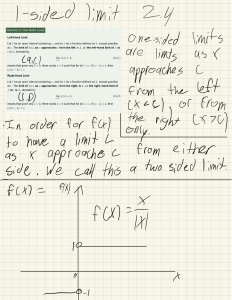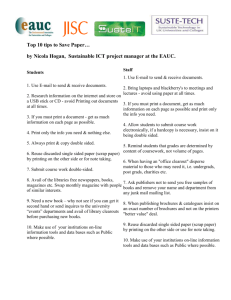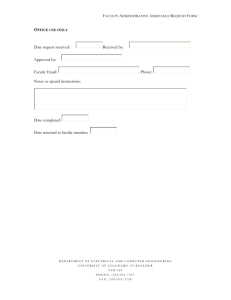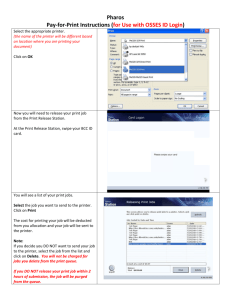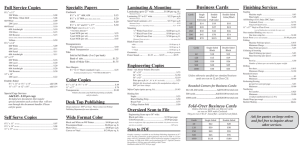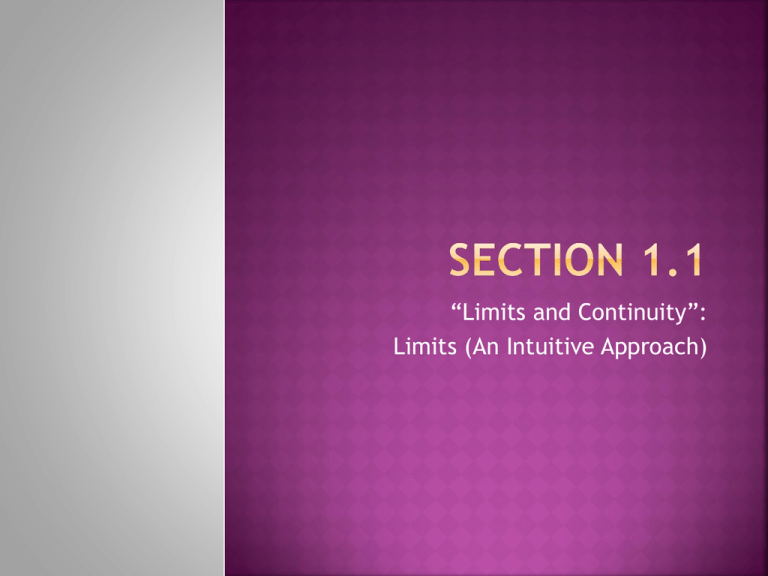
“Limits and Continuity”:
Limits (An Intuitive Approach)
Calculus,10/E
by Howard Anton, Irl Bivens,
and Stephen Davis
Copyright © 2009 by John Wiley & Sons, Inc.
All rights reserved.
The
concept of a “limit” is the fundamental
building block on which all calculus concepts
are based.
In this section we will study limits informally,
with the goal of developing an intuitive feel
for the basic ideas.
In the next several sections we will focus on
computational methods and precise
definitions.
Please read pages 67-69 and be prepared to
write a brief summary (quiz) next class.
The
most basic use of limits is to describe
how a function behaves as x (the
independent variable) approaches a given
value.
In
this figure, as x gets
closer and closer to 1
from either the left or
the right, y values get
closer and closer to 2.
We
can find one sided or two sided limits.
Below is the notation for one sided limits.
Therefore, the two sided limit at a
does not exist for the figure on
the right because its one sided
limits are not equal (1 does
not equal 3).
All
of these graphs have the same one sided
limits and none of the two sided limits exist.
It does not matter what happens right at the
a value when determining limits.
Sometimes
one-sided or two-sided limits fail
to exist because the values of the function
increase or decrease without bound.
Positive
and negative infinity (on the next
slide are not real numbers), they simply
describe particular ways in which the limits
fail to exist.
You
cannot manipulate infinity algebraically
(you cannot add, subtract, etc).
Think
about the following examples and we
will find limits at certain values of x next
class.
Example #1
Example
#2
Example
#3

